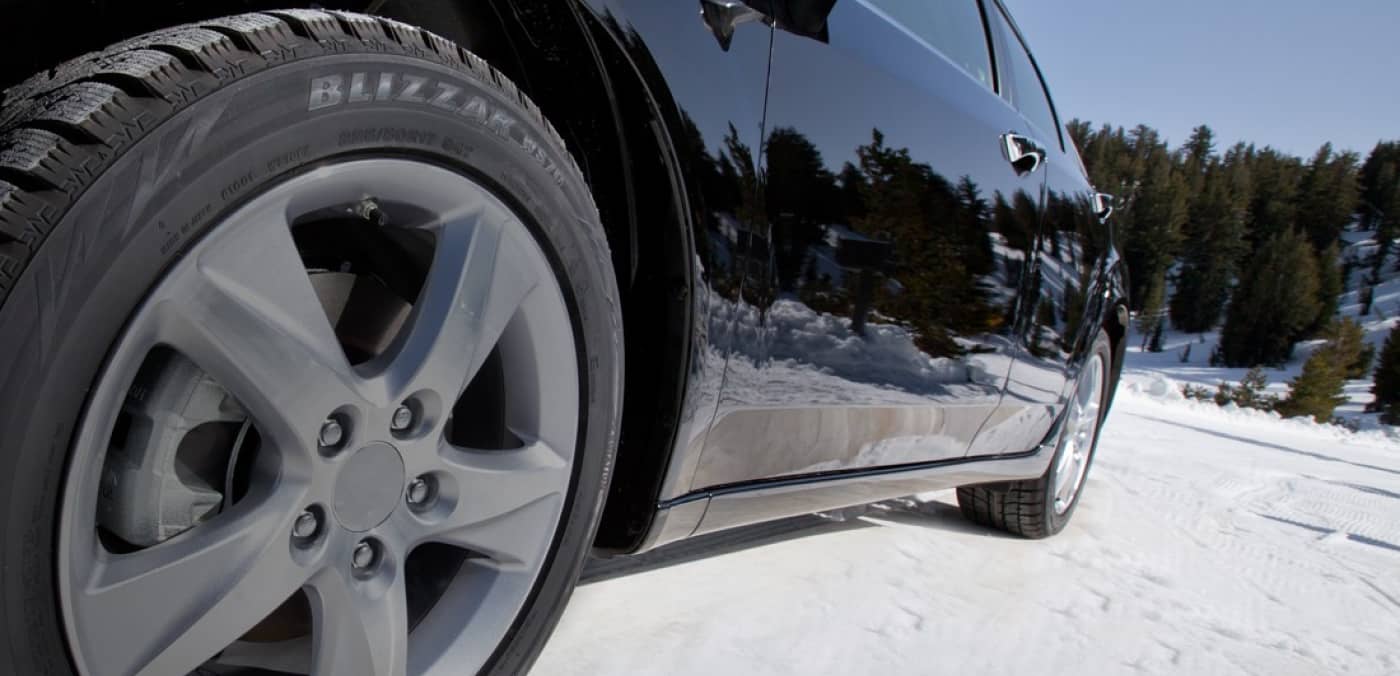If you live in an area that experiences snowy or icy conditions in the winter months, hitting the road means paying close attention to conditions and adjusting your driving accordingly. Driving slower, braking easier, and allowing more distance between vehicles are all ways to stay safe, but possibly the most important thing to is to install winter or "snow" tires.
WHAT ARE WINTER TIRES?
Winter tires are specifically designed to handle the challenges of driving in the most dangerous months of the year. From their tread patterns all the way down to the chemical compounds in the tread rubber, they are built specifically to provide better grip and more control in winter conditions.
THE TREAD RUBBER
Winter tires are made with tread rubber that maintains flexibility in low temperatures. All season and summer tires are made for warm climates and designed to withstand heat generated on the road. They are not designed for freezing temperatures tend stiffen in cold climates. When a tire stiffens, it is unable to provide the optimal traction you'll need to accelerate and stop.
THE TREAD PATTERN
Tread patterns of winter tires are very different than all season and summer tires. They feaure deeper tread depths with increased slots and sipes. Sipes are tiny slits in the tire that act as biting edges on ice. Together, these unique tread elements allow the tire to dig deep into snow, grip harder on ice, and ultimately provide more control.
Many people refer to winter tires as "snow" tires, but it's important to note that "snow" tires aren't just for when it's snowing outside. Winter tires are simply the best when it comes to maintaining traction, accelerating, stopping, and cornering in ice, snow, and slushy conditions.
These features help winter tires maintain traction on unpredictable winter roads. The softer rubber compound helps the tire maintain grip on an otherwise slippery road, the deeper tread pattern helps dig deeper into snow, while unique tread designs help channel water and slush from under the tire. In the end, your vehicle is less prone to skids or slides with snow tires than with all-season tires - and they can help you accelerate and stop faster, too.

WHY DO I NEED FOUR SNOW TIRES?
Whether your vehicle is front or rear-wheel drive, winter tires are best applied to all wheel positions. While some drivers question the necessity of changing all four, there are good reasons why tire and vehicle makers recommend using a full set of winter tires.
For one thing, just mounting two means you lose some of the traction, stopping and cornering advantages a full set provides. No matter what kind of vehicle you drive, never mount two winter tires on the front axle without also mounting them on the rear axle. Only installing snow tires on the front wheels increases the risk of losing rear tire traction while braking or cornering on wintery roads. This is because the back wheels will have less grip than the front wheels, a scenario that can throw you into a rear-wheel skid.
But what about just mounting winter tires on the back wheels, especially if your vehicle is rear-wheel drive, shouldn't that be enough?
Remember that in a rear-wheel drive vehicle, the front wheels steer and the rear wheels provide the power. So if your rear tires can grip the road but the front tires can't, any effort to steer the vehicle in the direction you want to go on wintery roads will be more difficult.
SWITCHING TO WINTER TIRES
Mounting a full set of winter tires is clearly a great option for driving in extreme cold, snow and ice, but how should you go about installing them? The answer to that question depends on where you live and when the winter weather arrives. Here's a good primer for when and how to install winter tires:
MOUNT WINTER TIRES BEFORE THE WEATHER HITS
You should definitely have winter tires installed before the winter weather hits. A good rule of thumb is that if you're consistently able to see your breath, it's time to mount winter tires.
MOUNT WINTER TIRES ON THEIR OWN WHEELS
Want to reduce waiting time at the auto shop? Have a technician mount your winter tires on another set of wheels that meet vehicle specifications (don't forget about the sensors for a Tire Pressure Monitoring System if your vehicles is so-equipped). Then, just change out the tire/wheel assemblies for the season - it's much easier than mounting and un-mounting tires every year!
DON'T WAIT TOO LONG TO REMOVE THEM
Winter tires are designed for optimum performance in winter conditions while summer and all-season tires are designed for summer performance. Driving on winter tires in the warmer months is not what they are designed for and can cause the tires to wear out faster.
No matter what kind of tires you drive on, be mindful of wintery road conditions and the possibility of encountering surfaces that are more slippery than others. It is always best to slow down and give yourself more time to get where you want to go. Making snow tire installation a seasonal habit also helps improve safety on the road. If you encounter snowy, icy and slushy conditions each year, a full set of winter tires isn't just a matter of convenience - it's a precaution that could prevent an accident.
WINTER DRIVING TIPS | CHECKING TIRE PRESSURE
Get familiar with your tire pressure gauge – you’re going to need it through the winter months. Find out why from a Bridgestone Winter Driving School Pro.



